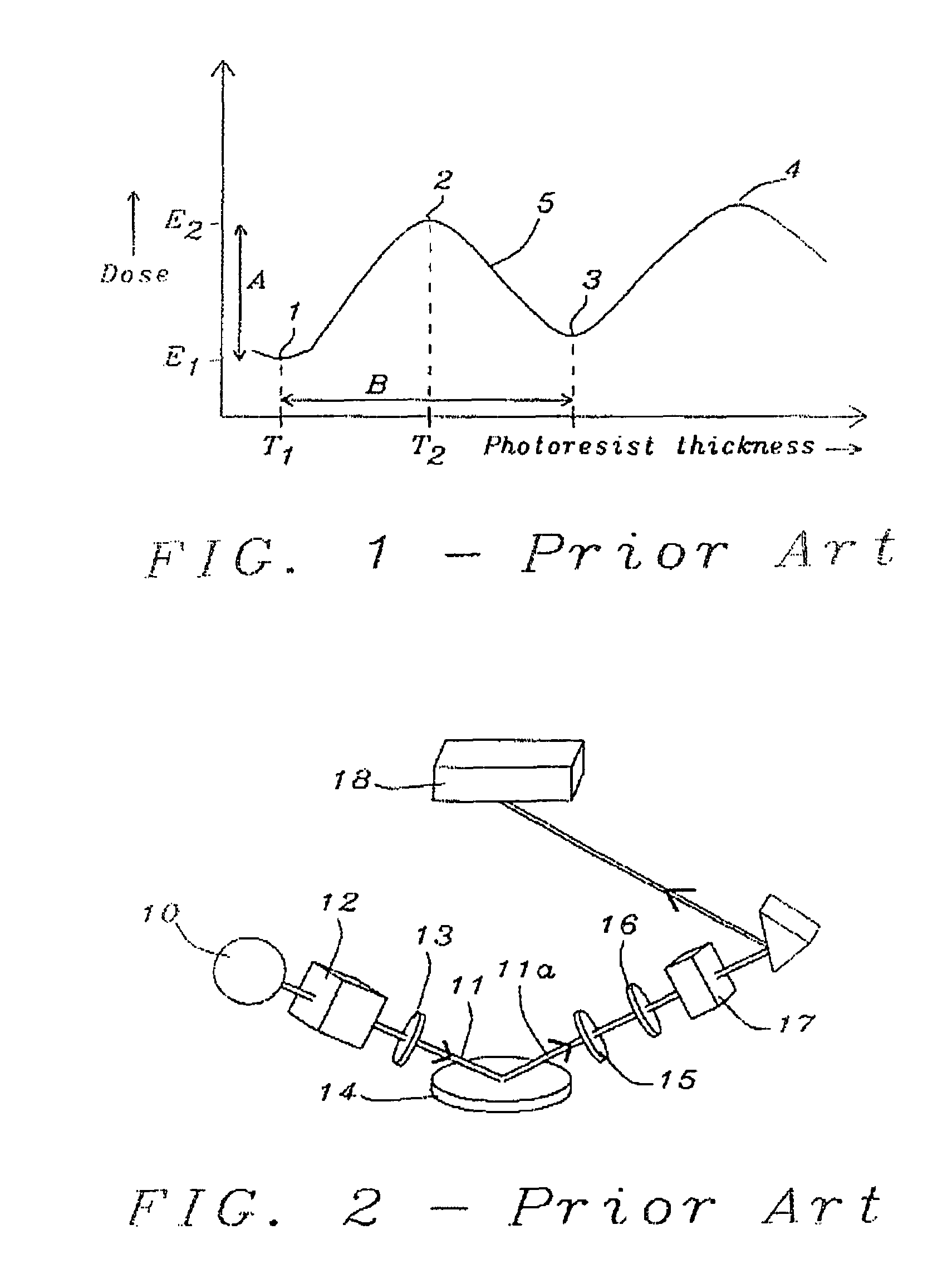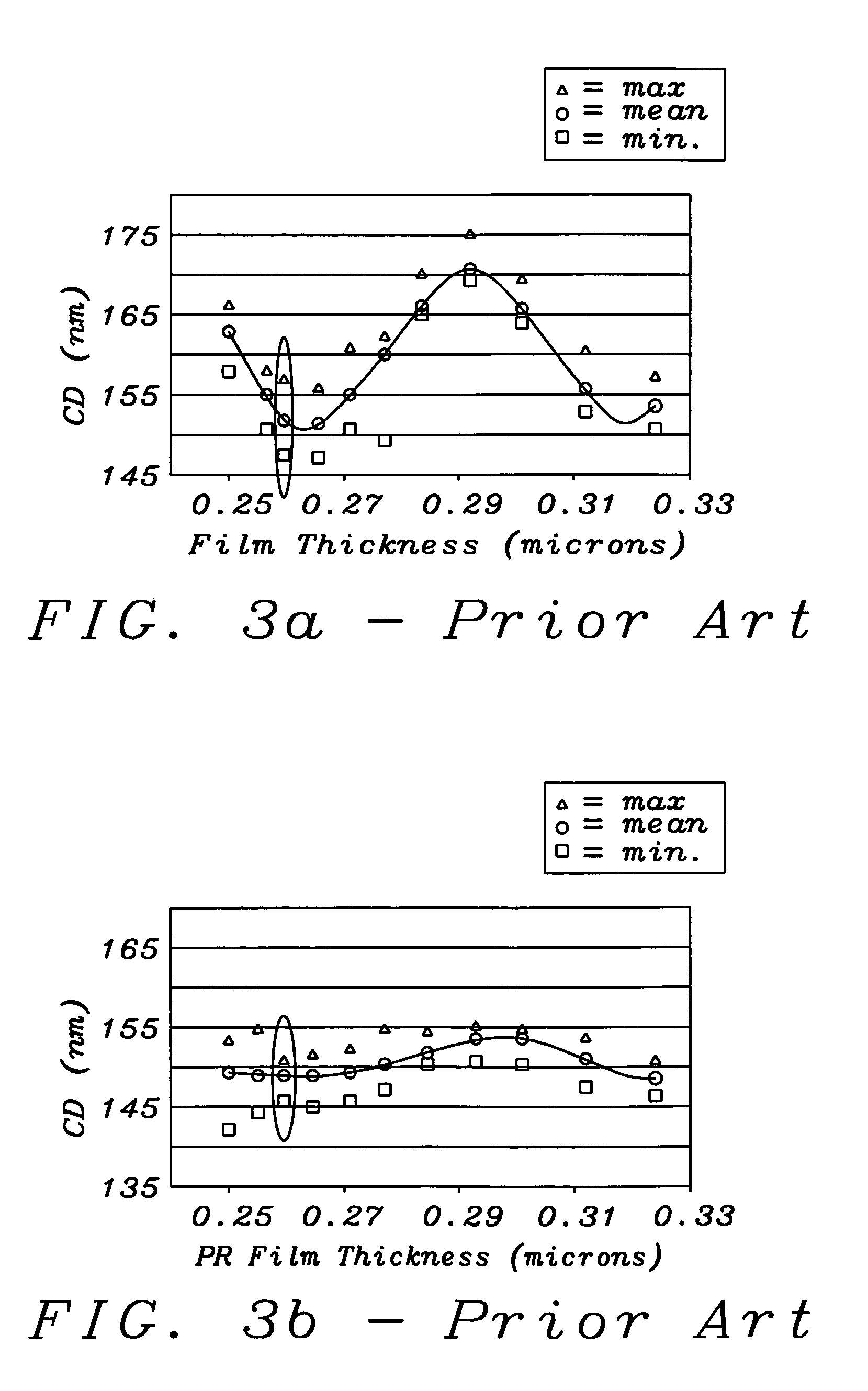Approach to improve ellipsometer modeling accuracy for solving material optical constants N & K
a modeling accuracy and ellipsometer technology, applied in the field of optical measurements, can solve the problems of erroneous n and k values, unreliable mapping signatures, and destructive interference with radiation, and achieve the effect of more reliable and higher accuracy
- Summary
- Abstract
- Description
- Claims
- Application Information
AI Technical Summary
Benefits of technology
Problems solved by technology
Method used
Image
Examples
first embodiment
[0028]Table 1 indicates that an improvement in accuracy is achieved by determining thickness (t) in this manner compared to the prior art method of calculating n, k, and t simultaneously. In this example, layer 20 is a commercially available organic ARC. Using the traditional method as shown in FIG. 6, a thickness of 315.88 Angstroms is determined with a range of values of 15.97 Angstroms. By following a method described for the first embodiment, a thickness of 306.45 Angstroms and a range of 7.62 Angstroms is calculated. Since a smaller range corresponds to a higher degree of certainty in the measurement, a higher accuracy is realized with the present invention.
[0029]
TABLE 1Organic ARC thickness, n and k at 248 nmThicknessMethod(Angstroms)range(n)rangekrangeTraditional315.8815.971.83640.18350.62480.1481(n, k, t) all atonceThickness306.45 7.621.80780.02210.65580.0345first, thenn & k
[0030]Optionally, the integrated optical measurement system may include a Beam Profile Ellipsometry (B...
second embodiment
[0039]In a second embodiment, the invention is a method of characterizing n and k values of films in a multi-layer stack with greater accuracy than in prior art. Although several layers can be applied to construct a stack on a substrate, a description for measuring a two layer stack will be provided in this embodiment.
[0040]Referring to FIG. 5, a substrate 14 is provided as described in the first embodiment that is typically a silicon wafer. An organic or inorganic layer 20 hereafter referred to as underlayer 20 is deposited on the substrate 14 with an intended thickness in the range of about 300 to 10000 Angstroms. The underlayer 20 may be a commercially supplied material or an experimental formulation that is being optimized in a development mode. Moreover, the underlayer 20 may comprise an anti-reflective layer (ARC) or a photoresist that has been hard baked to a temperature of about 200° C. to 250° C. While a photoresist is normally applied in a spin-on process, an ARC may be fo...
PUM
| Property | Measurement | Unit |
|---|---|---|
| thickness | aaaaa | aaaaa |
| wavelengths | aaaaa | aaaaa |
| thickness | aaaaa | aaaaa |
Abstract
Description
Claims
Application Information
 Login to View More
Login to View More - R&D
- Intellectual Property
- Life Sciences
- Materials
- Tech Scout
- Unparalleled Data Quality
- Higher Quality Content
- 60% Fewer Hallucinations
Browse by: Latest US Patents, China's latest patents, Technical Efficacy Thesaurus, Application Domain, Technology Topic, Popular Technical Reports.
© 2025 PatSnap. All rights reserved.Legal|Privacy policy|Modern Slavery Act Transparency Statement|Sitemap|About US| Contact US: help@patsnap.com



